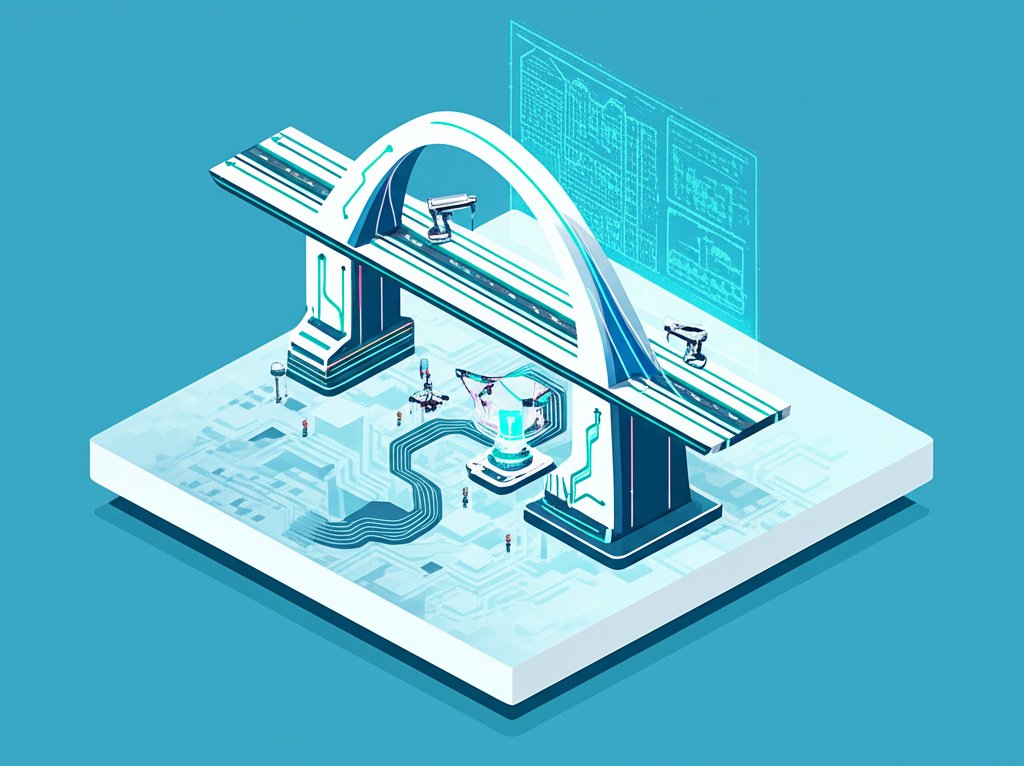Step into a world where the impossible becomes reality, where human ingenuity transcends limitations, and where the very fabric of our existence is shaped by breathtaking innovation. We often take for granted the intricate systems and towering structures that define our modern world, but beneath the surface lies a realm of surprising engineering feats that truly defy belief. This article will plunge into the depths of these extraordinary achievements, unveiling the most astonishing engineering marvels, incredible technological miracles, and profound engineering discoveries that push the boundaries of what we thought was possible. Get ready to have your understanding of science and technology forever transformed.
Beyond the Obvious: Unveiling Surprising Engineering Facts
Engineering isn’t just about constructing bridges or designing machines; it’s a dynamic field constantly innovating, often in ways that challenge our preconceived notions. Here, we present some mind-boggling engineering facts that showcase the ingenuity and problem-solving at the heart of the profession.
The Hidden Water Cycle of Skyscrapers
Did you know that many modern skyscrapers operate a complex internal water recycling system that rivals natural ecosystems? Far from simply pumping water upwards, these urban giants incorporate advanced greywater recycling, rainwater harvesting, and even condensation recovery systems. The Burj Khalifa, for instance, collects millions of gallons of condensate from its air conditioning system annually, enough to fill 20 Olympic-sized swimming pools, which is then used for irrigation and cooling. This elaborate plumbing and filtration is a triumph of environmental and civil engineering marvels, drastically reducing reliance on municipal water supplies.
The sophisticated water management in skyscrapers is just one example of how engineers are constantly finding innovative solutions, much like the other interesting facts about technology we often overlook in our daily lives.
Diamonds: Strong but Surprisingly Vulnerable
While renowned for their unparalleled hardness, making them virtually indestructible to scratching, diamonds possess a surprising vulnerability. Despite their reputation, these precious gems are remarkably fragile when subjected to sudden, intense impact or extreme temperatures. A strong hammer blow can shatter a diamond, and at temperatures above 700°C (1292°F), they can actually combust and turn into carbon dioxide. This fascinating paradox highlights the nuanced material science that engineers constantly grapple with, understanding properties beyond just perceived strength.
The Internet’s Invisible Undersea Backbone
Connecting continents and powering global communication, the internet relies on an astonishing network of fiber optic cables laid across ocean floors. This immense infrastructure, comprising hundreds of thousands of miles of cable, is an extraordinary engineering discovery in its own right. These delicate glass fibers, thinner than a human hair, transmit data at nearly the speed of light, encased in protective layers to withstand immense pressure and corrosive conditions at the bottom of the sea. The precision required to lay these cables, repair them, and maintain their integrity in such hostile environments is a testament to the scale of modern telecommunications engineering.
Why Bridges Don’t Just Collapse: The Art of Dynamic Stability
Many people view bridges as static, rigid structures. However, engineers design them to be dynamically stable, meaning they can gracefully absorb and dissipate forces from wind, traffic, and even seismic activity. The Millennium Bridge in London, initially suffered from “wobbly bridge syndrome” due to synchronized pedestrian footsteps creating resonant vibrations. Engineers solved this not by making it more rigid, but by installing viscous dampers that allow the bridge to “move with the flow” in a controlled manner, demonstrating a counter-intuitive surprising engineering principle where flexibility can equal stability.
Technological Miracles Reshaping Our World (and Perception)
The march of progress continues to present us with technological miracles that once belonged to the realm of science fiction. These groundbreaking innovations are not just novelties; they are fundamentally altering industries, improving lives, and expanding the very definition of human capability.
Gene Editing: The Precision Scissors of Life
CRISPR-Cas9 gene editing technology stands as a profound technological miracle, allowing scientists and engineers to precisely alter DNA sequences. This molecular “scissor” offers unprecedented control over genetic material, opening doors to curing hereditary diseases, developing pest-resistant crops, and even understanding the fundamental biology of life. The bio-engineering challenges involved, from delivering the CRISPR system to specific cells to ensuring ethical application, are immense, but the potential is truly revolutionary, hinting at a future where we can “re-engineer” life itself.
The Promise of Quantum Computing: Beyond Binary Limits
Imagine computers that can solve problems intractable for even the most powerful supercomputers today. This is the promise of quantum computing, a nascent yet incredibly powerful engineering discovery rooted in quantum mechanics. Unlike classical computers that use bits representing 0 or 1, quantum computers use “qubits” that can be 0, 1, or both simultaneously (superposition), and can be interconnected in complex ways (entanglement). While still in its early stages, the surprising engineering involved in building and maintaining these delicate machines at cryogenic temperatures promises breakthroughs in medicine, materials science, and artificial intelligence, redefining our computational limits.
AI and Machine Learning: Engineering Intelligence
The rapid ascent of Artificial Intelligence and Machine Learning represents one of the most impactful technological miracles of our era. From self-driving cars and medical diagnostics to predictive analytics and natural language processing, AI systems are engineered to learn from data, reason, and make decisions. The engineering facts here are astounding: complex neural networks with billions of parameters, trained on vast datasets, enabling machines to perform tasks that once required human intellect. This field is a constant loop of engineering discoveries, pushing algorithms and hardware capabilities to create increasingly sophisticated intelligent systems.
Modern Engineering Marvels: Redefining Human Limits
Our world is dotted with structures and projects that stand as monumental testaments to human ambition and engineering prowess. These are the engineering marvels that capture our imagination and demonstrate the pinnacle of collaborative design and construction.
The International Space Station (ISS): An Orbital Microcosm
Orbiting Earth every 90 minutes, the International Space Station is arguably the greatest engineering marvel ever constructed. A collaborative project of 15 nations, it’s a continuously inhabited orbital research laboratory. Assembled piece by piece in space, it includes advanced life support systems, power generation (solar arrays the size of football fields), complex robotic arms, and a multitude of scientific instruments. The surprising engineering challenge wasn’t just getting it into space, but designing a module system that could be docked, connected, and maintained in zero gravity, providing a habitable and functional environment for decades.
The Large Hadron Collider (LHC): Unlocking the Universe’s Secrets
Deep beneath the Franco-Swiss border lies the Large Hadron Collider, the world’s most powerful particle accelerator and a monumental engineering marvel. A 27-kilometer (17-mile) ring of superconducting magnets cooled to -271.3°C (1.9 Kelvin, colder than outer space) accelerates protons to nearly the speed of light before colliding them. The precision engineering required for these magnets, the vacuum systems, and the detectors that record the fleeting subatomic particles is mind-boggling, representing an unparalleled technological miracle in fundamental physics and engineering.
Palm Jumeirah: Creating Land from the Sea
Dubai’s Palm Jumeirah is a breathtaking engineering marvel that literally expanded the coastline, creating an artificial archipelago shaped like a palm tree. This ambitious project involved dredging millions of cubic meters of sand from the seabed and precisely placing it using GPS technology, creating 560 hectares (1,380 acres) of new land. The civil and marine engineering facts behind stabilizing this man-made landmass against erosion, managing water flow, and building infrastructure on a dynamic foundation are among the most intricate ever undertaken, turning a vision of luxury into a tangible reality.
Historic Engineering Discoveries That Changed Everything

While modern feats astound us, many foundational engineering discoveries from the past have laid the groundwork for everything we see today. These innovations, often simple in concept but profound in impact, were true technological miracles of their time.
The Birth of Reinforced Concrete: Building the Modern World
One of the most impactful engineering discoveries was the invention of reinforced concrete in the mid-19th century. By embedding steel bars or mesh within concrete, engineers created a material that combined concrete’s compressive strength with steel’s tensile strength. This simple yet brilliant innovation revolutionized construction, making possible the towering skyscrapers, massive dams, and expansive bridges that define our urban landscapes. Without it, many of today’s engineering marvels would be impossible.
The Transistor: The Tiny Heart of Modern Electronics
The invention of the transistor in 1947 at Bell Labs was a surprising engineering breakthrough that catalyzed the entire digital revolution. This miniature semiconductor device replaced bulky, power-hungry vacuum tubes, enabling the miniaturization of electronic circuits. Every smartphone, computer, and electronic device today relies on billions of these tiny switches. The engineering facts underpinning its design and subsequent manufacturing scaling (Moore’s Law) represent a triumph of materials science, electrical engineering, and manufacturing process innovation.
Roman Aqueducts: Masterpieces of Ancient Hydrology
The Roman aqueducts, some of which still stand today, are enduring engineering marvels of the ancient world. Without modern tools or computation, Roman engineers designed gravity-fed systems that transported water over vast distances, through tunnels, and across valleys via magnificent arched bridges. Their understanding of gradients, fluid dynamics, and durable construction materials was an extraordinary engineering discovery that provided clean water to cities, supporting large populations and advanced sanitation for centuries.
The Future of Engineering: What’s Next in Innovation?
The journey of engineering discoveries is far from over. Engineers worldwide are constantly pushing boundaries, envisioning and building the technological miracles of tomorrow. The future is being shaped by research into areas that promise even more surprising engineering breakthroughs.
Self-Healing Materials: Mending Themselves
Imagine concrete that repairs its own cracks, or aircraft wings that automatically seal punctures. Self-healing materials are a fascinating engineering discovery where embedded microcapsules release healing agents when damage occurs, effectively “mending” the material. This bio-inspired surprising engineering could dramatically extend the lifespan of infrastructure, reduce maintenance costs, and enhance safety across various industries, from construction to aerospace.
Vertical Farming: Reimagining Agriculture
As urban populations grow, vertical farming stands as a clever engineering marvel addressing food security and sustainability. Engineers are designing multi-story indoor farms that use precise climate control, LED lighting, and hydroponic or aeroponic systems to grow crops with significantly less land and water than traditional agriculture. This blend of environmental, civil, and agricultural engineering facts promises fresh produce closer to consumers, reducing transportation impacts and allowing for year-round harvesting, regardless of climate.
Brain-Computer Interfaces (BCIs): Bridging Mind and Machine
The development of Brain-Computer Interfaces (BCIs) represents a profound technological miracle and a future engineering discovery with immense potential. These devices allow direct communication pathways between the brain and external devices. From helping paralyzed individuals control prosthetic limbs with their thoughts to potentially enhancing human cognitive abilities, BCIs involve complex neuro-engineering, signal processing, and material science challenges. It’s a frontier where the human mind meets advanced electronics, leading to truly surprising engineering applications.
Conclusion
From the colossal structures that touch the sky to the microscopic components that power our digital lives, engineering marvels are everywhere, constantly evolving and surprising us with their ingenuity. We’ve journeyed through captivating engineering facts, explored world-changing technological miracles, and acknowledged the profound impact of countless engineering discoveries. The spirit of engineering is one of relentless problem-solving, boundless creativity, and an unwavering commitment to shaping a better future. The next time you encounter a bridge, use a smartphone, or even turn on a light, pause to appreciate the incredible, often unseen, surprising engineering that makes it all possible. The world of engineering is truly a testament to humanity’s ability to defy belief and build the extraordinary.
FAQ About Engineering Marvels and Discoveries

Q: What defines an engineering marvel?
A: An engineering marvel is a structure, machine, or system that displays extraordinary human ingenuity, technical skill, and scale, often pushing the boundaries of what was previously thought possible in its design, construction, or function.
Q: Why are some engineering facts considered “surprising engineering”?
A: Surprising engineering refers to principles, facts, or designs that defy common intuition or reveal unexpected complexities or vulnerabilities in seemingly simple concepts, such as the dynamic stability of bridges or certain material properties like diamonds.
Q: What are some examples of ancient engineering discoveries?
A: Significant ancient engineering discoveries include the Roman aqueducts, the Egyptian pyramids, the Greek Antikythera mechanism, and early irrigation systems that revolutionized agriculture and urban development.
Q: How do technological miracles impact society?
A: Technological miracles profoundly impact society by creating new industries, solving critical global challenges (like disease or food security), improving quality of life, and fundamentally changing how humans interact with their environment and each other.
Q: What is the primary goal of modern engineering?
A: The primary goal of modern engineering is to apply scientific principles and mathematical methods to design, build, and maintain structures, machines, processes, and systems that solve real-world problems and improve human well-being, often with a focus on efficiency, sustainability, and innovation.










